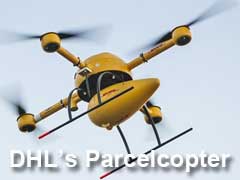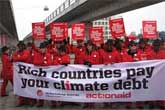| |
|
| |
|
 |
Supply
Chain by the Numbers |
| |
|
| |
- September 26, 2014 -
|
| |
|
| |
|
| |
|
| |
China Wants Big Money to Reduce Its Carbon Emissions; Is Anyone's CSCMP Number Lower than Jack Ampuja's? DHL Launches Its Parcelcopter; US Foods Links Vendor POs to Transport Efficiency |
| |
|
| |
| |
| |
7 |

|
|
|
| |
| |
|
15-25%
|
 |
That's the amount that a manager from technology provider Aerostream said companies can save in transportation costs from changing current order patterns and profiles to vendors to maximize logistics efficiency. That according to a presentation this week at the CSCMP annual conference in San Antonio. In fact, it is this ability to leverage vendor orders in terms of quantities and timing that give the real total cost advantage to buying companies in terms of taking control of inbound freight versus letting vendors manage their freight. This perspective was validated during the presentation by US Foods, which has used Silversteam technology to make major improvements in its transport costs by adjusting vendor POs for logistics optimization.
|
| |
| |
|
| |
| |
$100 Billion |
|
That's the amount of funding that the top developed economies have rather vaguely pledged to transfer to developing economies to help them transfer to "low carbon" economies, based on a UN accord a couple of years ago. The pledge is of course controversial, and a report from China this week added to that controversy by saying the $100 billion was just the starting point - that from the second largest economy in the world that is likely to become number 1 soon by some estimates. Carbon emission cutbacks by China and other developing countries, the document says, will be "dependent on the adequate financial and technology support provided by developed country parties." The $100 billion current pledge by 2020 is only the "starting point" for additional Western financial commitments that must be laid out in a "clear road map," which includes "specific targets, timelines and identified sources," China says. This will get interesting, we guarantee.
|
| |
| |
|
|
|
| |
 |
 |
| |
|
|
| |